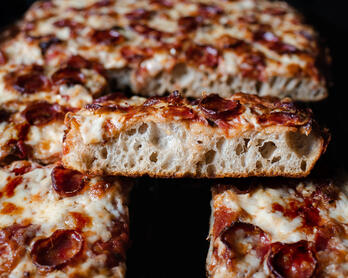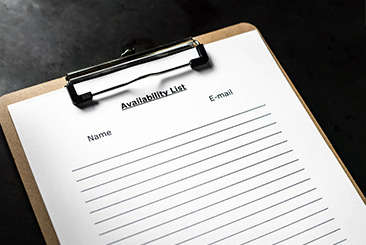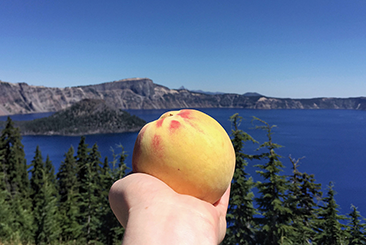Washed Flour Wheat Gluten (Seitan/Mian Jin)
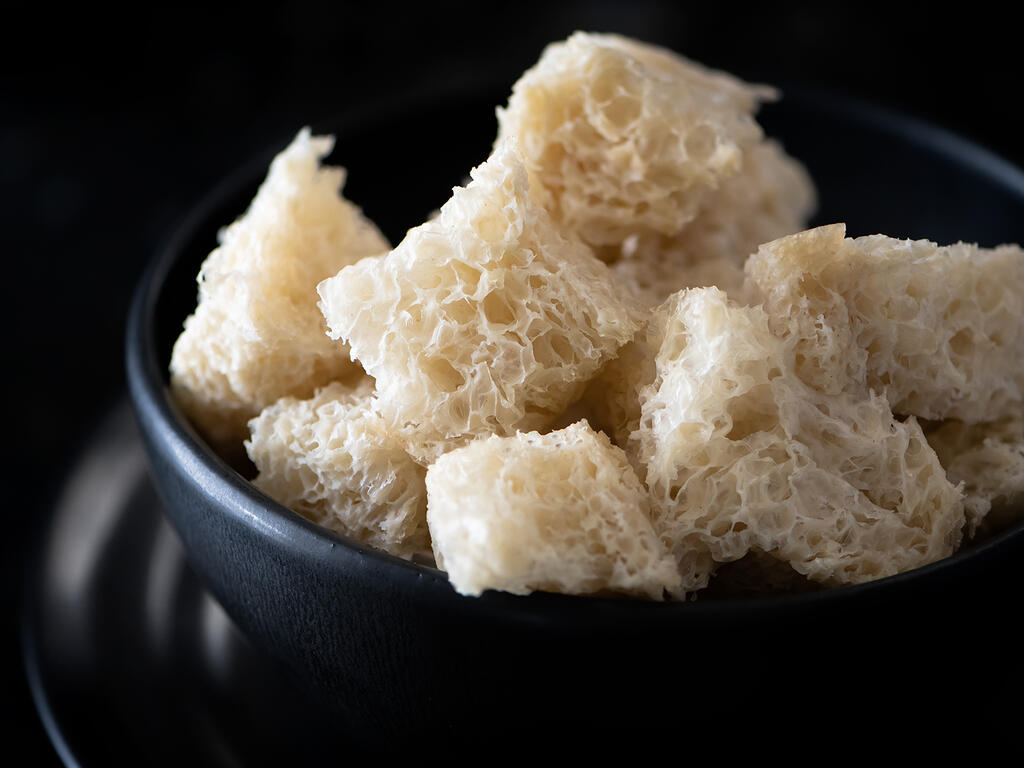
For the purposes of this post, wheat gluten, mian jin, and seitan are the same thing. Photo: Baked wheat gluten.
Wheat gluten and its culinary applications started knocking around in my head after watching Netflix's Flavorful Origins: Gansu Cuisine - Gluten. Gansu is a region extending from north-central to northwestern China and the series beautifully documents some of the local cuisine including the art of making cold skin noodles (liang pi).
To make the noodles, dough is slowly agitated in water with a large wooden paddle - similar to hand-washing laundry - until two components remain: a milky liquid (starchy water) and a stretchy mass of wheat gluten.
Gluten comes from the Latin word for glue or sticky. When you mix wheat flour and water, the naturally-occurring proteins in the flour (gliadin and glutenin) form a strong yet elastic substance that gives bread spring and chew.
Gluten is the extraordinary webbing that gives bread structure and conversely it's the strength you aim to tame when making pastries. Bakers spend considerable time pondering, discussing, coaxing, and generally obsessing about it. While the show's cinematography and lighting were stunning, what had my attention was the gluten that had been extracted from the dough. What was that blobfish-like mass destined to become?
As the process continued, the starchy liquid ultimately turned into slippery cold skin noodles that resembled raw calamari. Separately, the wheat gluten/seitan was steamed or baked into a mesmerizing honeycombed sponge that soaked up whatever sauce it was tossed in. Most seitan can generously be described as looking like the vegan child of meat and brain but the version on the screen was airy and translucent.
The first thing I did after watching the Gluten episode was watch it again. After that, I set out to find a washed dough formula that replicated the bouncy texture I saw on Flavorful Origins. The majority of recipes I came across were for the dense beige seitan that's often made with vital wheat gluten and turned into mock meat. One link led to another and I hit upon Xi'an Famous Foods which made the dream a reality. While the cookbook calls wheat gluten "seitan", a few sites identify what I made as mian jin. Instructions are at the bottom.
I added the springy cubes to a cucumber salad also from Xi'an Famous Foods though you could probably try any number of spicy cucumber salads and just make some extra dressing to toss the wheat gluten in. Other uses include braising as well as fried gluten balls. Making washed flour seitan is just a neat exercise in food science so have some fun with it.
But first...
The documentary unlocked a queue of questions in my mind. The most obvious curiosity was the fact that wheat gluten is simultaneously a valued source of protein (having more per serving than tofu) and the "G" in GF aka gluten free. You could say wheat gluten is the OG that nobody seems to want in their food nowadays. "Nobody" largely being in North America as it comprises a solid share of the multi-billion GF market. Much more on this in the Around The Dinner Table section below.
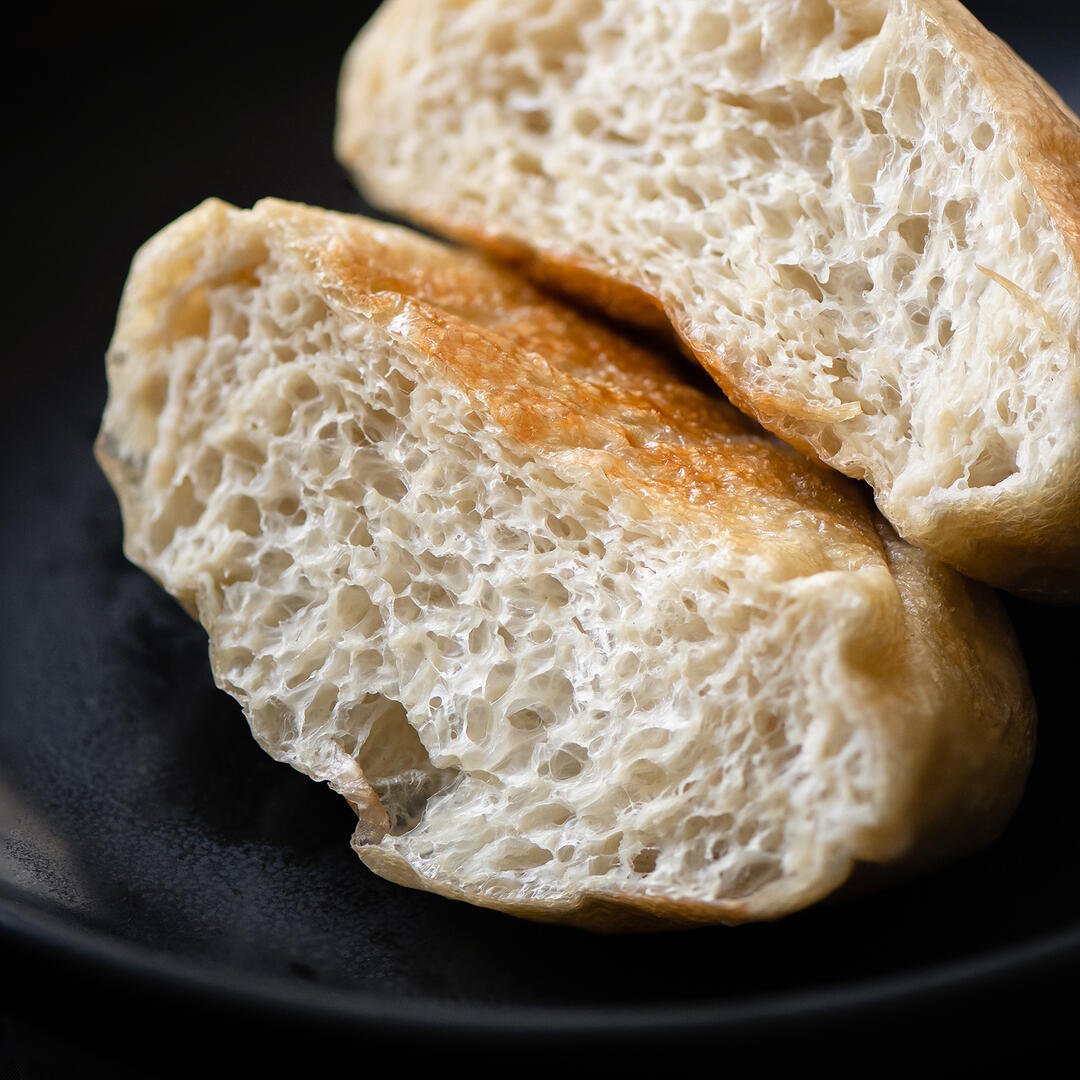 Baked Wheat Gluten (seitan/mian jin)
Baked Wheat Gluten (seitan/mian jin)
Around the Dinner Table
What's New Is Old
With seitan being hot on TikTok and Noma posting about their experiments, wheat gluten could be mistaken for a new idea in the world of gastronomy but that's not the case. Vegetarian protein alternatives such as wheat gluten have been on the dinner table for over 1000 years of the many millennia humans have been eating wheat. Jump around the timeline to 1960s Japan when George Ahsawa, an advocate for the macrobiotic diet, rebranded wheat gluten as "seitan" and sent it west to become a star amongst commune dwellers and the natural-food store crowd. The Farm Vegetarian Cookbook published in 1975 included a recipe for raw gluten along with Janice's Barbecue Gluten "Ribs" and Gluten Burritos. Useless fact for Los Angeles Erewhon shoppers is that the company's founders were macrobiotic proponents and the first to import this newly minted seitan to the United States in 1969.
Now for the curious part. Here we are in the 21st century and, in a relatively short period, gluten has become the named suspect for a number of digestive ailments and the foundation for a multi-billion GF industry. In less than a generation, have our bodies changed that much, has the food we eat changed, is GF a fad, or is the answer to all of these questions somewhere in the muddy middle?
Eggs-actly what is the problem?
Similar to wheat, eggs have been a part of the human diet for a long time - over 10,000 years give or take. Even with that long history, egg yolks became the boogeyman when "low-fat, low cholesterol" was the diet du jour. How did gluten become the egg yolk of the 21st century?
Back in the 80s and 90s, grocery stores were awash in rice cakes and low-fat raspberry Entenmann's twists with nutrition panels that should have made everyone suspicious. Just say "rice cakes" around people of a certain age and they will look your way with a knowing nod followed by, "but you need to add peanut butter." Rice cakes haven't disappeared but they're not as popular as they once were. That said, those cylindrical bags of negative nutrition may be working on a reboot thanks to the gluten-free movement. Big food companies are keen to repackage product in the way that movie studios churn out the same stories for new generations.
Ironically, the unintended consequences of low-fat/cholesterol food is that it has not been kind to the American waistline. If you take the internet for a quick spin and read about fiber, sugar content, energy delivery, and how it all relates to feeling satiated it's easy to see how things went astray. Science eventually caught up and offered a partial redemption for eggs.
There is now general consensus that dietary cholesterol, primarily consumed in eggs, and to a lesser extent in certain seafoods like shrimp, has a relatively small effect in raising blood cholesterol.
The suggestion is not to eat a dozen egg yolks a day, but it seems that a couple here and there are likely fine for most people. Unfortunately, moderation is boring and doesn't sell books.
The explosion of gluten-free (GF) products and cookbooks feels reminiscent of the rice cake's heyday. GF product launches have jumped from 9000 in 2010 to 42,000 in 2021 and 1 in 3 Americans apparently prefer to eat gluten free because they perceive it as healthier. This raises some questions. What are the unintended consequences of removing gluten from food? Fiber, vitamins? What fills the gap and are rice and similar white flours really healthier? How does it impact the complex nature of food as energy? A study done by the American Academy of Pediatrics had this to say:
It is important to unsettle the assumption that GF food equals healthy, which has functioned as an excellent sales tool for the food industry, but does little to support public health.
Data showed 88% of the gluten-free products were classified as unhealthy compared to 97% of regular products. The gluten-free products were lower in sodium, total fat, and saturated fat. However, they also had less protein and more calories from sugar. About 79% had high sugar levels.
I'm not getting into the nutrition game but I did find the split between people who echo the above sentiment and articles/sites that hype the benefits of gluten-free foods to be instructive.
War and Bread
It's all well and good for me to sit here pondering the ubiquity of GF whilst dreaming up food puns but gluten is deadly serious for about 1% of the population in the United States (1 to 1.7% globally). Those individuals have celiac disease, a chronic and verifiable disorder (i.e. there's a genetic marker) where consuming gluten triggers an autoimmune response that can damage the intestines and other organs, ultimately interfering with nutrient absorption. In light of that, I imagine the GF movement is a mixed blessing for celiac sufferers. It raises awareness and expands food options but also brings hipsters and their gluten-free water to the party.
The celiac topic eventually dropped me into WWII-era Europe where the disease was discovered almost by accident. Wartime supply-chain issues meant many foodstuffs including basics like sugar, butter, and flour were scarce to non-existent.
No bread was to be had in the cities [of 1944 Holland], with the rare exception of black marketeers offering a barely edible product at extortionate prices...It wasn’t a wheat shortage so much as an absence of wheat. - Discover
A Dutch pediatrician, William Karel Dicke, noticed that some of his patients had relief from chronic digestive symptoms during the food shortages but then relapsed when wheat products were back on the shelves. It was a tragic dietary experiment that lead to a breakthrough. Dicke connected the scientific dots and in 1950 he published a thesis explaining how a protein in gluten (gliadin) was to blame.
These findings led to the modern treatment of celiac disease, a gluten-free diet. - Discover
Celiac disease as a wheat-related health issue is established but that still only accounts for a small percentage of the population. What about everyone else that believes they're gluten intolerant?
Enzymes of a Feather
Jumping over to England around the same time that celiac disease was discovered gets even more interesting.
England was going through its own recovery from war-related bread rationing. The native low-protein flour wasn't suitable for traditional breadmaking so the country had historically been dependent on wheat imports from North America and Canada. As already mentioned, importing foodstuffs had been at a standstill during the conflict. The baking industry and government got together in Chorleywood, England, and established the British Baking Research Association to find a new way forward.
The folks at the BBRA decided to harness the wonders of 1960s chemistry, do away with overnight fermentation altogether, and allow lower-protein UK wheat to be used in place of its higher-protein US cousin. And thus, the Chorleywood Bread Process (CBP) was born. - Alliance for Natural Heath
The Chorleywood Bread Process or CBP could also just be called fast bread since it's mixed, baked, cooled, and bagged in less than 3 hours. A loaf of sourdough takes hours just to cool so my knee-jerk response to learning about CBP was, "but how?" The answer comes in the form of undisclosed additives (some made from feathers and pig parts...we'll get to that), copious amounts of yeast, and extra gluten that prop the wheat up so it can form a fluffy loaf of emptiness at warp speed. That emptiness comes with an additional cost of energy and water that's needed to rapidly mix and cool the product.
Flour that is sliced and packed into plastic wrapping in less than three hours—that’s not bread. - Stephen Jones, Director - WSU Bread Lab, New Yorker
I didn't know much about vital wheat gluten before writing this post so it's worth distinguishing between it and naturally-occurring gluten. The simple act of kneading together flour and water creates gluten and that's how it's made in the seitan recipe below and the dishes featured in Flavorful Origins. Vital wheat gluten on the other hand is an extracted, dried, and concentrated product - it's bread steroids. Technically the two are the same with different dosing powers, and adding vital wheat gluten to a product that already has gluten creates a different beast altogether. But beyond bread, vital wheat gluten is everywhere. It's a stabilizer, binder, and thickener and can be found in crackers, cereals, medications, and much more.
The amount of gluten added to industrially made bread keeps increasing, and Stephen Jones [Director, WSU Bread Lab] has become acutely interested in whether that extra gluten may be at least partly responsible for the gastrointestinal distress reported by so many people. "I just wonder how much of this additional gluten our bodies can digest - there has to be some limit." - New Yorker
Currently, over 80+% of the bread on shelves in England is made using the Chorleywood Bread Process and CBP has been embraced by countries such as India, Australia, and New Zealand. It's relatively safe to assume that much of store-bought bread in United States is fast bread though the exact numbers were harder to nail down.
To redefine bread using the most simple and traditional formulation--the product of the bacterial and yeast fermentation of flour, water, and salt--would render virtually all of what qualifies as bread on supermarket shelves today as something else entirely, according to our own FDA requirements. - Bethany Econopouly
Bread Matters
A question I had early on was why is gluten the egg yolk of the 21st century. Have our bodies changed, has the food we eat changed? When it comes to the industrial process of making bread, it has meaningfully changed for the worse in a relatively short period.
As I was writing this post, I picked up Bread Matters authored by Andrew Whitley, a former bakery owner and passionate advocate for "real" bread. One of several interesting takeaways is that, aside from vital wheat gluten, there are a number of processing aids in packaged bread (and meat, cheese, frozen dough, sugar, vegetable oil, and seemingly all processed foods) that manufacturer's don't have to disclose on the label. If your favorite avocado oil lists "100% avocado oil" as the single ingredient, it's legal for undisclosed processing aids to have been used to make that oil. Not only that, if you're a vegetarian or vegan it's worth knowing that some of those processing aids are derived from animals. Phospholipase, for example, is an enzyme made from the pancreas of a pig and is used in mayonnaise, sauces, dressings, baking, ice cream, and sometimes bread - but you won't find that word on the label. Supposedly the processing aids don't end up in the finished product but the information I read about that claim makes me give the whole situation a side eye. Even if there's no residue, what are the enzymes doing to the integrity of the food? Plus, there's the ethical issue of not letting people decide if they want to buy something made with animal products. I can't look at labels now without wondering what's not disclosed.
At this point, it's easy to wonder how people could not have some level of digestive discomfort eating these processed foods.
Slow Your Roll
You hear the anecdotal evidence that people who believe they have gluten sensitivities can tolerate naturally-leavened bread. As a biased sourdough bread baker, I know that slow bread - bread made with a sourdough starter and long fermentation period - affords the yeast time to transform the starches, sugars, and gluten in the dough. That process is often suggested to be akin to the first stage of digestion. While the science isn't settled, I can attest that a conventional thick-crust pizza (short fermentation) sits in my stomach like a bowling ball for hours whereas a Sourdough Sicilian doesn't do that even when I overindulge and have an extra slice. It's not a stretch to think that the additives, excessive use of gluten and yeast, and absence of proper fermentation is what ails the human digestive system rather than gluten itself. Celiac sufferers are obviously excluded from that thought.
It was also interesting to learn via a quick search that familiar names are the prominent players in the gluten-free space. Many gluten-free products are being marketed as a solution to a problem that the same companies may be helping to create. The consequences of fast food production and ingredient elimination marketed as health has proven to have unintended consequences more than once and yet here we are. With all of that, I ended up with more questions than I started with. As the science becomes clearer, I'm rooting for gluten to at least earn a partial redemption.
Eggs have re-entered the chat and would like to offer their moral support.
It has been said that history repeats itself. This is perhaps not quite correct; it merely rhymes. - Theodor Reik
On to a recipe...
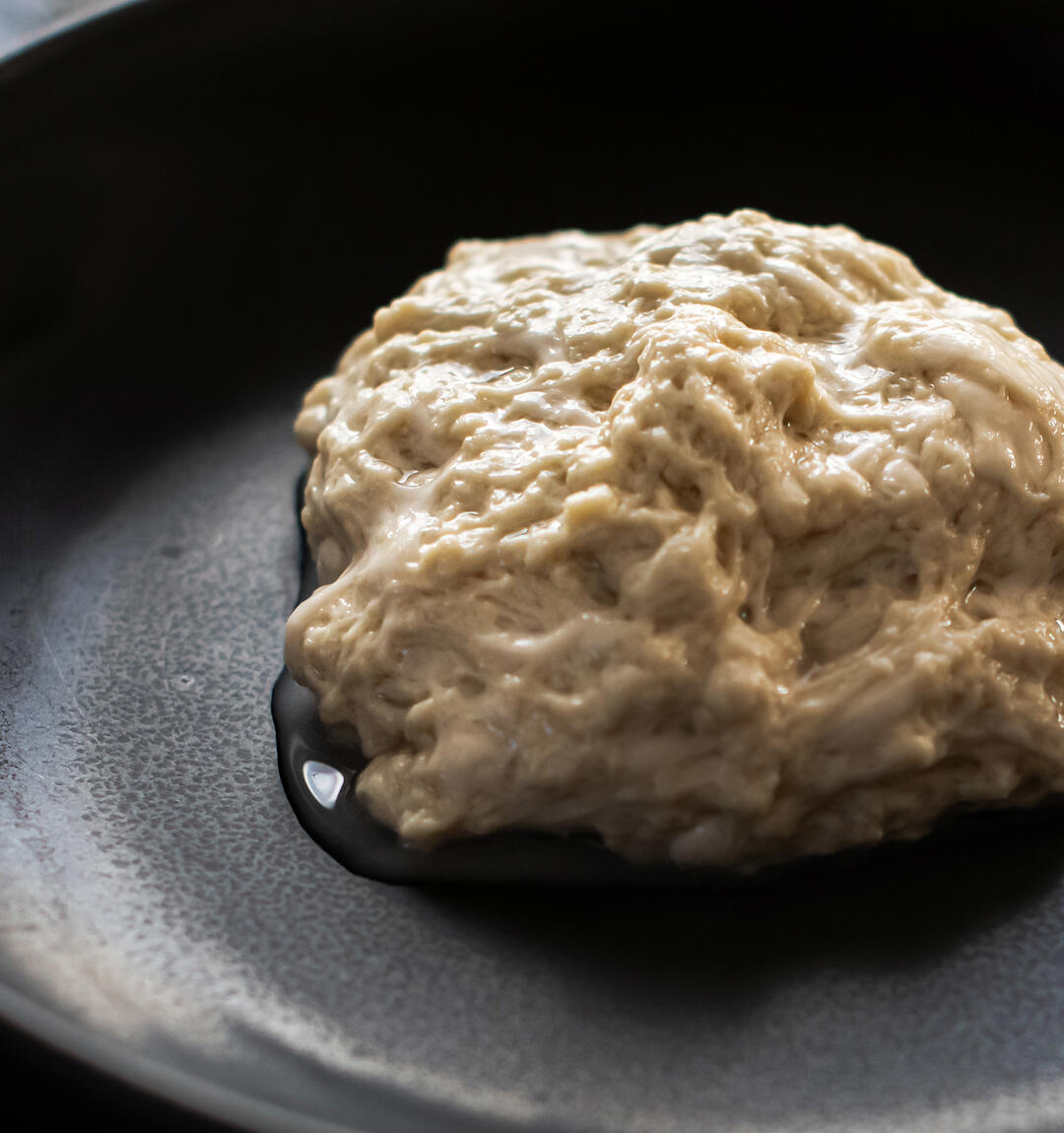 Raw Wheat Gluten - Washed Dough Method
Raw Wheat Gluten - Washed Dough Method
Original vs. Adapted
Yeast
The amount of yeast called for in the cookbook imparted too strong of a flavor for my taste so I cut it back. You can see from the pictures that the results are light and airy so you really don't need more than I add as long as you give the raw gluten enough time to ferment.
Salt
I increased the salt slightly.
Steamy
During the Flavorful Origins episode, wheat gluten was either baked or steamed so I opted for the oven. Xi'an Famous Foods suggests that steaming takes about 30 minutes if you want to go that route. I suspect it will yield a more compressed texture while still having some spring.
Ingredients - Recipe from Xi'an Famous Foods
As a point of reference, the wheat gluten that looks like a hamburger bun (above) was a half portion of the recipe below and gave me enough seitan for a couple of salads. It also freezes beautifully.
- 614 grams (22 ounces) high-protein flour (such as Central Milling High Mountain) or all-purpose flour
- 410 grams (14 1/2 ounces) water
- 1/2 teaspoon Diamond kosher salt
- 1/8 teaspoon yeast
Instructions
Seitan and wheat gluten are the same thing for the purposes of this post.
Day 1
- Whisk the salt and flour together then add the water. Mix by hand until the dough is shaggy and there aren't any dry bits. Give a few stretch/folds then set aside for an hour. This isn't a fussy process, you just need to build the gluten. If kneading is more your speed, by all means do that instead of stretch/folds.
- After 30 minutes, perform a few more stretch/folds then rest for 30 minutes.
- Repeat the above process two more times which brings you to a total of four sets of stretch/folds. The dough will be smooth and will spring back when gently pressed.
If time is limited, you have the option to stop here and refrigerate the dough overnight.
- Submerge the strengthened dough in a bowl with 4 cups of water give or take. Fold and squeeze the dough but don't break it apart into pieces - like hand-washing laundry. When the water becomes very white and saturated with starch, pour it out and add fresh water to the bowl. Do this 4 to 5 times until the water is relatively clear. The recipe suggests rinsing until the water is completely clear but I live in California and that's a lot of water so "relatively clear" is close enough. The webbed mass in your hand is gluten. Note: If you're making liang pi (cold skin noodles), the Xi'an Foods recipe specifies to wash your dough in 3 cups of water at a time. That ratio of starch to water is important for the noodles. If you're just making seitan, the amount of water doesn't really matter, hence the suggested 4 to 5 cups.
- Briefly hold the gluten mass under running water to clear off any residual starch then set aside in a clean bowl. Note: Some water may accumulate in the bowl, just blot that up with a towel.
- Sprinkle the yeast over the gluten and knead to thoroughly incorporate. The mass will be stringy and slippery and will try to resist you (gluten is gluten after all), but the texture will sort itself out in the next steps.
- Let the gluten ferment for 1 1/2-2 hours. Every 30 minutes or so, perform a couple gentle stretch/folds then tuck the blob under a few times. You're just smoothing out the raggedy texture.
- Once the gluten has had some time to ferment and is a cohesive mass, cover the bowl tightly and place in the refrigerator.
I've baked the seitan on day 1 but the texture seems to come out better when the gluten rests overnight. If you want to bake same day, let the dough rest for an hour after the last stretch/fold.
Day 2
- Take the gluten out of the refrigerator an hour before you plan to bake. It will be relatively flat which is expected.
- Move a rack to the middle position and heat the oven to 350°F.
- Line a baking sheet with foil and then place a piece of parchment on top. Lightly oil the parchment (I use olive oil).
- Lift the gluten out of the bowl and place it on the prepared baking sheet. Gently dimple the gluten to spread it out into an even layer, taking care not to compress it too much. My half batch of this recipe measured 5"x5" if that reference point is helpful.
- Bake for 25 to 30 minutes until the gluten is puffed, has some golden spots on top, and the internal temperature is 207 to 210°F. Transfer to a wire rack to cool and don't be surprised when the gluten loaf deflates - that's normal.
- Once completely cool, freeze for future use.
How to Use Seitan/Baked Wheat Gluten
- If working with frozen wheat gluten, simply leave it on the counter to defrost.
- To use the seitan, trim away the outer crust (kitchen scissors work well) then cut into cubes.
Newsletter
Subscribe at the bottom of this page for the Chic Eats roundup. It includes new and updated recipes along with a grab bag of content that was interesting enough to share around the dinner table.


